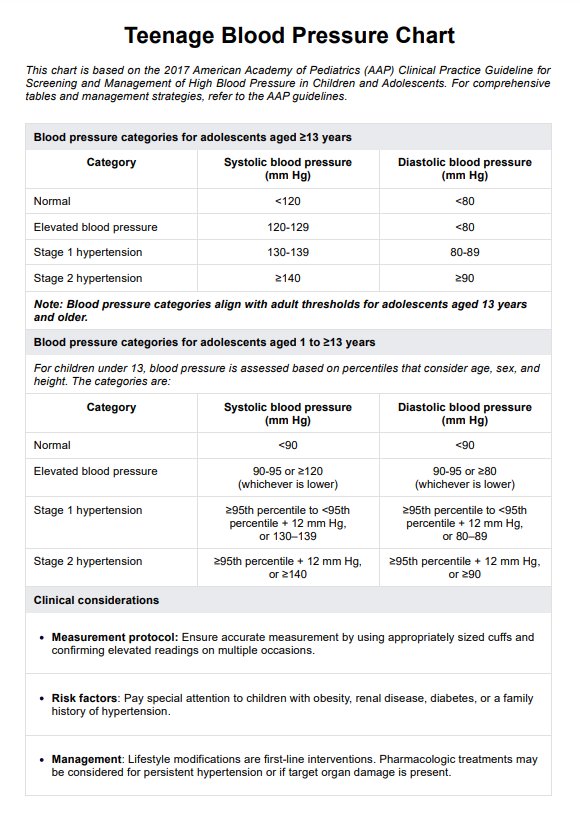A blood pressure reading of 130/80 mm Hg or higher is considered elevated for a 15-year-old, indicating high blood pressure or hypertension. Readings at or above this level warrant further evaluation and monitoring to prevent long-term cardiovascular risks.

Teenage Blood Pressure
Access Carepatron's free Teenage Blood Pressure Chart PDF to support clinical assessments. Download the template now.
Use Template
Teenage Blood Pressure Template
Commonly asked questions
A blood pressure reading below 90/60 mm Hg is considered low for a 15-year-old. While often asymptomatic, consistently low readings may require assessment if accompanied by dizziness, fatigue, or fainting.
Yes, a systolic blood pressure of 130 mm Hg is considered high blood pressure for a 15-year-old. It meets the criteria for stage 1 hypertension and should be evaluated for potential underlying causes.
EHR and practice management software
Get started for free
*No credit card required
Free
$0/usd
Unlimited clients
Telehealth
1GB of storage
Client portal text
Automated billing and online payments











